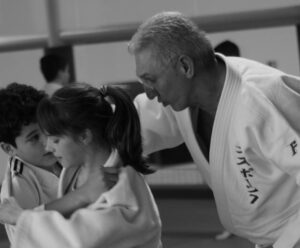1. Each team member should have the opportunity to have his or her view on; the targets/goals that have to be set, the role that each individual member has to perform, the methods that will be employed to reach the targets/goals and the expectations that the team members have of the team.
This section is a brainstorming phase.
Expressing the views of the group process may then lead to the formulation of group targets/goals and to understand how these targets/goals can be best achieved.
Important is that the team gets confidence in the cooperation. Therefore the probability that the set target/goal will be reached will be larger.
In this section we come to common targets/goals and shared visions.
2. Make clear what the individual skills of team members are and which tasks the individual team members aspire.
The tasks of the team members are then matched and the team comes to collaboration and targeted teamwork.
3. Individual and collective responsibility and accountability.
In the interest of the team, team members are required to work utmost to reach the stated goals. Team members must seek to account for their individual actions, but they should also bear responsibility for the group results.
4. A team culture should arise.
This includes the acceptance of leadership, developing a team identity, team spirit and team attitude. A positive team culture and cohesive group atmosphere.
In order to promote culture, the team coach or manager should be aware of what goes on within the team. Setting up a participation council can be a good way to get informed.
5. Team identity is important in teambuilding.
Team identity can be built explicitly by involving team members in the group’s goals, formulating common ideals and open expressions of pride in their performances.
6. The promotion of open and honest communication.
Good communication prevents problems, but it is also important in solving problems.
Open and honest communication is based on trust, sincerity and mutual understanding.
7. Mutual help and social support.
The willingness of teammates to provide each other, if necessary, with practical and emotional support has a beneficial effect on the functioning of the team as a whole. Partly for this reason it is good that team members know each other outside the functional atmosphere.
These seven basic components of team building is an approach at different levels:
➢ Individual approach
➢ Group approach or interpersonal approach
➢ Task-oriented approach
In the individual approach the team member is the central.
In the group approach is the formation of the team central.
The task-oriented approach, the primary efforts are focused on achieving goals.
Willem Visser
Executive coach, Strategic Adviser, International Lecturer, 8th Dan Judo IJF
With gratitude to all my teachers, specialists, colleagues and especially all the judoka that I was allowed to guide and to coach.
Sources and inspiring professionals:
Van der Horst, Cobben, Abe, Saitoh, Yamashita, Uemura, Sugawara, Murata, Hosokawa, Komata, Takahashi, Nakamura, Kasuga, Kawashima, Kariya, Brousse, Besson, Rougé, Ruska, Geesink, de Cree, Barta, Vachun, Viser, Lascau, McConnell, Snijders, Sins, Hoogendijk, Boersma, Odinot, van Dijk, Klok and many others




